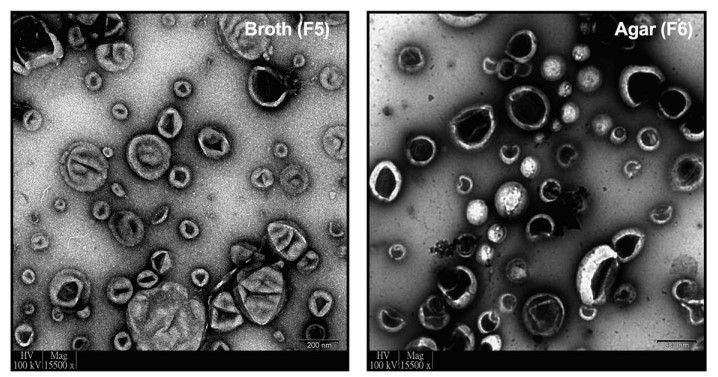Candida auris-derived Exosome Research and Application
Candida auris-derived exosomes were found to act as messengers between fungi and host cells to regulate fungal drug resistance. Candida auris-derived exosomes, on the one hand, enhance the ability of fungi to combat host defenses by coordinating fungal adaptive and host immune responses during infection, and on the other hand, regulate the chemical composition and physical properties of the fungal extracellular environment through the translocation of specific drug resistance-associated proteins. Creative Biolabs can provide high-quality exosome characterization and profiling services of fungal sources to support a wide range of fungal exosome research.
Candida auris-derived Exosomes Preparation
-
Take a single Candida auris colony on Sabouraud dextrose agar and inoculate it into broth or agar for overnight incubation. Then take Candida auris liquid culture and expand the culture again.
-
Centrifuge the culture and collect the Candida auris supernatant.
-
Vacuum filtration and concentration of Candida auris supernatant by cellulose membrane concentration system.
-
Obtain purified Candida auris-derived exosomes by ultracentrifugation and layered iodixanol density gradient centrifugation sequentially.
 Fig. 1 Transmission electron micrograph of Candida auris-derived exosomes obtained by broth culture and agar culture.1
Fig. 1 Transmission electron micrograph of Candida auris-derived exosomes obtained by broth culture and agar culture.1
Studies on Candida auris-derived Exosomes
|
Research
|
Conclusion
|
|
Proteomic analysis of Candida auris-derived exosomes.
|
-
Separation of Candida auris-derived exosomal proteins by SDS-PAGE by mass showed that the intensity of the bands on the gel correlated with the proteins quantified by BCA, and that there was a distinct band of 25-35 kDa.
-
The proteins in this band were profiled by mass spectrometry and further identified by investigating the protein list to include alcohol dehydrogenase 1, elongation factor 1α, phosphoglycerate kinase, and C. albicans glycosidase Xog1-like protein with the highest intensity.
-
It was also confirmed that Xog1 contained in Candida auris-derived exosomes shares all the active site and substrate-binding structural domains of C. albicans Xog1.
|
|
Candida auris-derived exosomes were involved in resistance mechanisms.
|
-
Candida auris was treated with graded concentrations of Candida auris-derived exosomes followed by the addition of antifungal drugs.
-
The antifungal susceptibility assay indicated that the minimal inhibitory concentration of the formulation was significantly increased in Candida auris-derived exosomes-treated Candida auris in an exosome-dose-dependent manner. This shows that Candida auris-derived exosomes induced Candida auris shift from sensitive to drug-resistant phenotype.
-
Even with the treatment of liposome-encapsulated formulations, the protection against Candida auris provided by such Candida auris-derived exosomes persisted.
|
Studying the role and mechanism of Candida auris-derived exosomes in mediating fungal multi-drug resistance offers important insights into infections with drug-resistant fungal strains. Creative Biolabs specializes in providing research services on fungal-derived exosomes to help clients understand the phenotypic and molecular mechanisms of fungal drug resistance. Please contact us with your interest.
Reference
-
Chan, Walton, et al. "Induction of amphotericin B resistance in susceptible Candida auris by extracellular vesicles." Emerging Microbes & Infections 11.1 (2022): 1900-1909.
For Research Use Only. Cannot be used by patients.
Related Services:

 Fig. 1 Transmission electron micrograph of Candida auris-derived exosomes obtained by broth culture and agar culture.1
Fig. 1 Transmission electron micrograph of Candida auris-derived exosomes obtained by broth culture and agar culture.1








